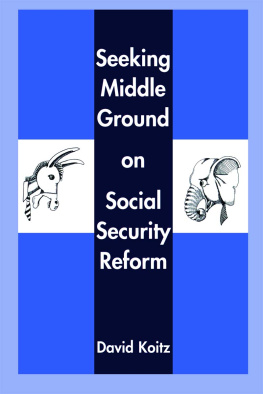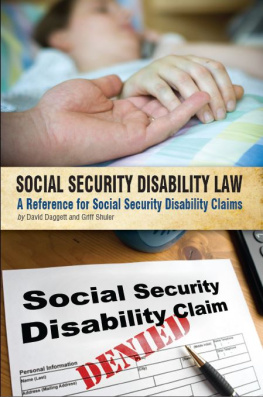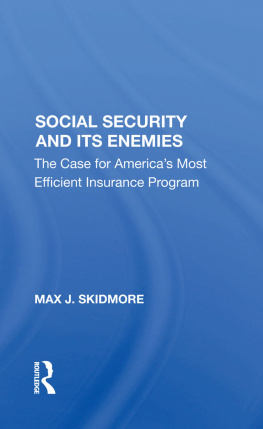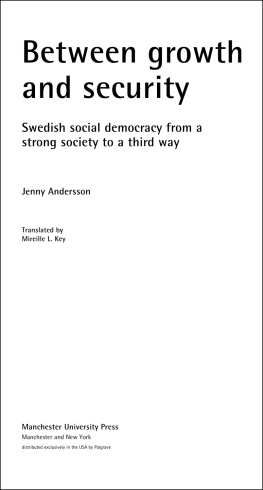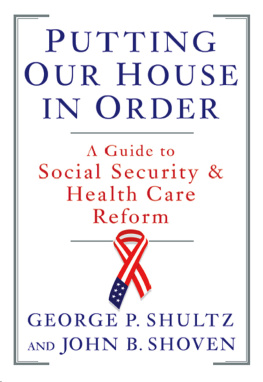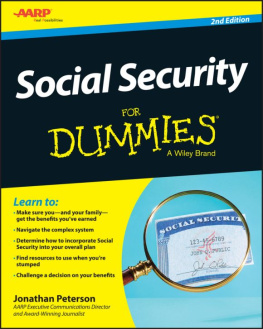The Hoover Institution gratefully acknowledges generous support from
TAD AND DIANNE TAUBE TAUBE FAMILY FOUNDATION KORET FOUNDATION
Founders of the Program on American Institutions and Economic Performance
and Cornerstone gifts from
SARAH SCAIFE FOUNDATION
The Hoover Institution on War, Revolution and Peace, founded at Stanford University in 1919 by Herbert Hoover, who went on to become the thirty-first president of the United States, is an interdisciplinary research center for advanced study on domestic and international affairs. The views expressed in its publications are entirely those of the authors and do not necessarily reflect the views of the staff, officers, or Board of Overseers of the Hoover Institution.
www.hoover.org
Hoover Institution Press Publication No. 489
Copyright 2001 by the Board of Trustees of the Leland Stanford Junior University
All rights reserved. No part of this publication may be reproduced, stored in a retrieval system, or transmitted in any form or by any means, electronic, mechanical, photocopying, recording, or otherwise, without written permission of the publisher.
First printing, 2001
Manufactured in the United States of America
07 06 05 04 03 02 01 9 8 7 6 5 4 3 2 1
The paper used in this publication meets the minimum requirements of American National Standard for Information Sciences Permanence of Paper for Printed Library Materials, ANSI Z39.48-1984.

Library of Congress Cataloging-in-Publication Data
Koitz, David.
Seeking middle ground on social security reform / David Koitz.
p. cm.
Includes bibliographical references and index.
ISBN 0-8179-9972-8 (alk. paper)
1. Social securityUnited States. I. Title.
HD7125.K5875 2001
368.4300973dc
21 2001016654
Contents
C HAPTER O NE
Where We Are TodayThe Setting for Reform
C HAPTER T WO
The Resilient Long-Range Problem
C HAPTER T HREE
The Case for InsolvencyHow Seriously Do We Take the Projections?
C HAPTER F OUR
Potential First StepsAllocating Budget Surpluses and Defining a Role for Individual Accounts
C HAPTER F IVE
The Painful ChoicesWhat May Work, What May Not
C HAPTER S IX
Where There Might Be Fertile Ground
Index
Acknowledgments
I wish to thank the Hoover Institution for funding the preparation of this monograph, and the Library of Congress for granting me a leave of absence. I am particularly grateful to John Raisian, the Hoover Institutions director, and John Cogan, one of its senior fellows, for inviting me to come out and work on this piece in their most wonderful environment, and for the gracious and ever-attentive support of the Hoover staff. I also appreciate the helpful comments and suggestions on the monographs content from John Cogan and from Geoffrey Kollmann and Bill Robinson of the Congressional Research Service of the Library of Congress, and for the technical oversight of Pat Baker and Richard Sousa of the Hoover Institution.
The views and opinions expressed herein are solely mine and should not be considered views or recommendations of the Hoover Institution or the Library of Congress.
CHAPTER 1
Where We Are Today The Setting for Reform
Perhaps at no time in the past half-century has the debate about social security been so introspective as it is now. Not since the inception of social security in 1935 and the consideration of a welfare-type alternative in 1950 has there been so much of a challenge to the role of government in providing the nations workers with retirement benefits.and any discourse about social security benefits is more typically about how to increase rather than reduce them.
This is not to suggest that there havent been many criticisms levied against the system. Few, however, have captured policymakers attention and tapped public discontent the way a variety of recent reform ideas have. The clash of policy conceptssocial insurance versus wealth creationis pronounced today. Social insurance in the United States was born in the 1930s, as a system that sought to insure society as a whole against poverty in old ageby some accounts, half or more of the aged were then living in some form of dependency. Social insurance mandates participation while people work; it also dictates coverage of as many as the political system will permit, so that as few as possible will enter their later years dependent on welfare programs and their families. It requires contributions (taxes) but is less concerned about what the individual receives in return and more about the adequacy of the benefits it affords in general, the goal being to afford people with a minimal floor of income protection when they come to the point where they can no longer work.
Todays ardent proponents of reform see less need for a governmental hand and greater opportunities for workers to individually provide for their retirement years and potential disabilities, opportunities that offer greater choice and greater rewards both to individuals and the nation as a whole. This idea evolves in part from the philosophic belief that a system in which individuals are responsible for their own financial well-being would be fairer and, thus, economically beneficial to society as a whole. Proponents contend that the nation is much different today than in the past, with a much advanced financial infrastructure and capacity to sustain a viable individually based system that would be more enduring than a governmentally based income transfer program relying on taxes that may have to rise to unprecedented levels 30 years from now.
President Clinton heightened interest in reform with his last three State of the Union messages, calling particular attention to the systems long-range funding problems. He left the issue largely unattended, but his concerns served to complement a decade of warnings by the systems board of trusteesits presumed financial watchdogswho routinely since 1989 have forecasted long-range funding shortfalls. Numerous members of Congress too, from both parties, have introduced a wide range of substantive reform bills since the 103rd Congress.
Despite this attention and calls for change, nothing of any notable significance has been done. The most recent Congressthe 106thopened aggressively on the issue, with H.R.1 being set aside for President Clintons anticipated proposal, but it closed on a hollow chord as no meaningful action was taken. The 2000 election campaign certainly kept the issue alive, but even with a change in executive leadership this year, it is not clear that the most relevant factors that thus far have bogged down the process will dissipate. Foremost among these issues is the presence of a tight governing balance in Washington. With the party composition of Congress remaining closely divided, the political setting has not changed. In addition, in contrast to the pressures leading up to past social security reforms, the system is not projected to have any near-term problems, even under adverse assumptions. Thus, no urgency exists.

